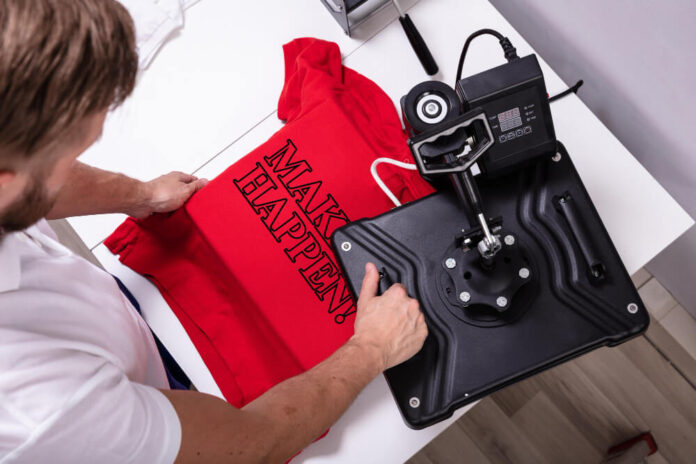In recent years, the t-shirt printing industry has undergone a significant transformation with the introduction of new technologies like Direct-to-Film (DTF) and Direct-to-Garment (DTG) printing. For online t-shirt printing businesses, understanding these methods and effectively marketing your products can make all the difference in standing out in a competitive market.
DTF vs DTG: Understanding the Differences
Both DTF and DTG printing offer unique advantages for t-shirt businesses, but it’s crucial to understand their differences to determine which method best suits your needs.
Direct-to-Film (DTF) Printing
DTF printing is a relatively new technique that has gained popularity due to its versatility and efficiency. The process involves printing designs onto a special film using water-based inks, then applying a powdered adhesive. The design is then heat-pressed onto the garment, resulting in a durable and vibrant print.
Key advantages of DTF printing include:
- Versatility: Can be used on various fabrics, including cotton, polyester, and blends
- Vibrant colors: Produces bright, long-lasting prints
- Cost-effective for small to medium runs
- No need for pre-treatment on dark garments
Direct-to-Garment (DTG) Printing
DTG printing involves applying ink directly to the fabric using specialized inkjet technology. This method is ideal for producing highly detailed, full-color designs on light-colored garments. One of the most popular DTF printers on the market is the Epson F2270 DTF printer, known for its reliability and high-quality output. This professional grade printer is perfect for applying intricate, photo-realistic designs with eco-friendly, water-based inks.
Choosing the Right Method for Your Business
When deciding between DTF and DTG printing for your online t-shirt business, consider factors such as:
- Types of designs you typically print
- Fabric varieties you work with
- Average order quantities
- Budget for equipment and supplies
For businesses that handle a wide range of fabrics and design types, DTF printing may offer more flexibility. However, if your focus is on high-detail designs on light-colored cotton garments, DTG might be the better choice.
Marketing Your T-Shirt Printing Business on Social Media
In today’s digital age, effectively marketing your t-shirt printing business on social media is crucial for success. Here are some strategies to help you stand out:
1. Showcase Your Work
Regularly post high-quality photos and videos of your printed t-shirts. Use platforms like Instagram and Pinterest to create visually appealing galleries of your designs. Consider creating time-lapse videos of the printing process to give customers a behind-the-scenes look at your work
2. Engage with Your Audience
Respond promptly to comments and messages. Host Q&A sessions or live streams to interact with your followers and address their questions about your printing process or products
3. Collaborate with Influencers
Partner with influencers or local businesses to create limited edition designs. This can help expand your reach and bring in new customers
4. Utilize User-Generated Content
Encourage customers to share photos of themselves wearing your printed t-shirts. Create a branded hashtag and feature the best submissions on your social media accounts
5. Offer Exclusive Deals
Use social media to promote limited-time offers or exclusive discounts to your followers. This can help drive sales and increase customer loyalty.
6. Educational Content
Share informative posts about different printing techniques, fabric care tips, or design trends. This positions your business as an authority in the industry and provides value to your audience
Leveraging SEO for Your Online T-Shirt Business
To improve your visibility in search engine results, consider implementing these SEO strategies:
- Optimize your website with relevant keywords related to t-shirt printing and custom apparel
- Create blog content that addresses common questions and topics in the t-shirt printing industry.
- Ensure your website is mobile-friendly and loads quickly.
- Build high-quality backlinks from reputable sources in the fashion and printing industries
Staying Current with Industry Trends
To keep your t-shirt printing business competitive, it’s important to stay up-to-date with the latest trends and technologies. Regularly attend trade shows, follow industry publications, and network with other professionals in the field.
One valuable resource for staying informed about the t-shirt printing industry is the Specialty Graphic Imaging Association (SGIA). They offer educational resources, industry news, and networking opportunities for printing professionals.
Expanding Your Product Offerings
While t-shirts may be your primary focus, consider expanding your product line to include other printable items such as hoodies, tote bags, or even face masks. This diversification can help attract a wider customer base and increase your revenue streams.
Prioritizing Customer Service
Exceptional customer service can set your business apart from competitors. Respond promptly to inquiries, offer clear communication throughout the order process, and address any issues quickly and professionally.
Consider implementing a customer feedback system to continually improve your products and services. This can help build trust and loyalty among your clientele.
Embracing Sustainability
As consumers become increasingly environmentally conscious, consider incorporating sustainable practices into your business. This could include using eco-friendly inks, offering organic cotton options, or implementing recycling programs for old garments.
Highlighting your commitment to sustainability can be a powerful marketing tool and attract environmentally conscious customers. The Sustainable Apparel Coalition provides valuable resources and guidelines for implementing sustainable practices in the apparel industry.
Conclusion
Success in the online t-shirt printing business requires a combination of technical expertise, marketing savvy, and a commitment to quality. By understanding the advantages of different printing methods like DTF and DTG, effectively marketing your business on social media, and staying current with industry trends, you can position your business for growth and success in this competitive market.
Remember to continually evaluate and adapt your strategies as the industry evolves. With dedication and creativity, your online t-shirt printing business can thrive in the digital marketplace.
